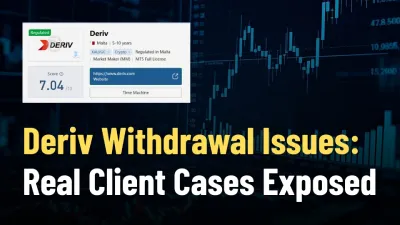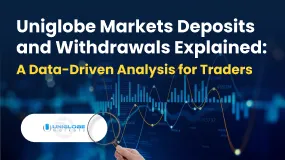简体中文
繁體中文
English
Pусский
日本語
ภาษาไทย
Tiếng Việt
Bahasa Indonesia
Español
हिन्दी
Filippiiniläinen
Français
Deutsch
Português
Türkçe
한국어
العربية
What are Real Yields?
Abstract:Knowing your real interest rate gives you an idea of what your investment is paying you after factoring in inflation.

The concept of real interest ratesor real yields hit the headlines last month, raising growth concerns for global investors. To everyday consumers, the phrase meant little, but to professional investors, it meant returns investors expect to earn after inflation.
Everyday consumers are conscious of interest rates. They know they are earning very little by putting their money in the bank. They are also aware of rising inflation, which has dominated the headlines for several months.
What they havent done is put together the concept of how little they really earn on their money in the bank when one strips out the inflation rate. That number is the real rate they are earning.
Investors didnt pay much attention to the real yield when inflation was low in the sub-2% area. This is because the benchmark 10-year U.S. Treasury yield was trading in the essentially the same area. But since the start of the global economic recovery, yields have stayed near historical levels, while inflation has soared to multi-year highs. This has pushed real rates into negative territory.
Many consumers know the interest rate on their savings account, or the money they earn on their balance. However, they probably dont know what their real interest rate is. This article will explain real interest rates.
What is the Real Interest Rate?
Simply stated, a real interest rate is an interest rate that has been adjusted to remove the effects of inflation to reflect the real cost of funds to the borrower and the real yield to the lender or to an investor.
In equation form, the real interest rate is simply equal to the nominal interest rate minus the actual or expected inflation rate.
To understand real interest rates, you have to first understand inflation. Inflation is a general, sustained upward movement in the prices of goods and services in an economy.
Inflation matters when making decisions related to interest rates on savings accounts and other financial assets. For example, when you have a savings account, interest is at work increasing the amount deposited, while inflation is at work reducing its value.

Disclaimer:
The views in this article only represent the author's personal views, and do not constitute investment advice on this platform. This platform does not guarantee the accuracy, completeness and timeliness of the information in the article, and will not be liable for any loss caused by the use of or reliance on the information in the article.
Read more

Check Yourself: The Costly Trading Habits Every Trader Must Fix
Are the trading habits you barely notice the very ones quietly destroying your profits, and could a single overlooked mistake be costing you far more than you realise?

Scandinavian Capital Markets Exposed: Traders Cry Foul Play Over Trade Manipulation & Fund Scams
Does Scandinavian Capital Markets stipulate heavy margin requirements to keep you out of positions? Have you been deceived by their price manipulation tactic? Have you lost all your investments as the broker did not have risk management in place? Were you persuaded to bet on too risky and scam-ridden instruments by the broker officials? These are some burning issues traders face here. In this Scandinavian Capital Markets review guide, we have discussed these issues. Read on to explore them.

Deriv Withdrawal Issues: Real Client Cases Exposed
Deriv exposed via client cases of withdrawal issues, 13‑month refund delays, severe slippage, and disabled accounts despite multiple “regulated” licenses.

Uniglobe Markets Deposits and Withdrawals Explained: A Data-Driven Analysis for Traders
For any experienced trader, the integrity of a broker isn't just measured in pips and spreads; it's fundamentally defined by the reliability and transparency of its financial operations. The ability to deposit and, more importantly, withdraw capital seamlessly is the bedrock of trust between a trader and their brokerage. When this process is fraught with delays, ambiguity, or outright failure, it undermines the entire trading relationship. This in-depth analysis focuses on Uniglobe Markets, a broker that has been operational for 5-10 years and presents itself as a world-class trading partner. We will move beyond the marketing claims to scrutinize the realities of its funding mechanisms. By examining available data on Uniglobe Markets deposits and withdrawals, we aim to provide a clear, evidence-based picture for traders evaluating this broker for long-term engagement. Our investigation will be anchored primarily in verified records and user exposure reports to explain the Uniglobe Mar
WikiFX Broker
Latest News
CFTC Polymarket Approval Signals U.S. Relaunch 2025
MH Markets Commission Fees and Spreads Analysis: A Data-Driven Breakdown for Traders
Alpha FX Allegations: Traders Claim Account Blocks, Withdrawal Denials and Security Breaches
How to Become a Profitable Forex Trader in Pakistan in 2025
Gratitude Beyond Borders: WikiFX Thank You This Thanksgiving
KEY TO MARKETS Review: Are Traders Facing Withdrawal Delays, Deposit Issues & Trade Manipulation?
FCA Consumer Warning – FCA Warning List 2025
Zipphy Exposed: No Valid Regulation, Risk Warning
Australia’s Fraud-Intel Network Exposes $60M in Scams
RM104.9 Million Gone: Why Hundreds Are Demanding a Full MACC Investigation
Currency Calculator



